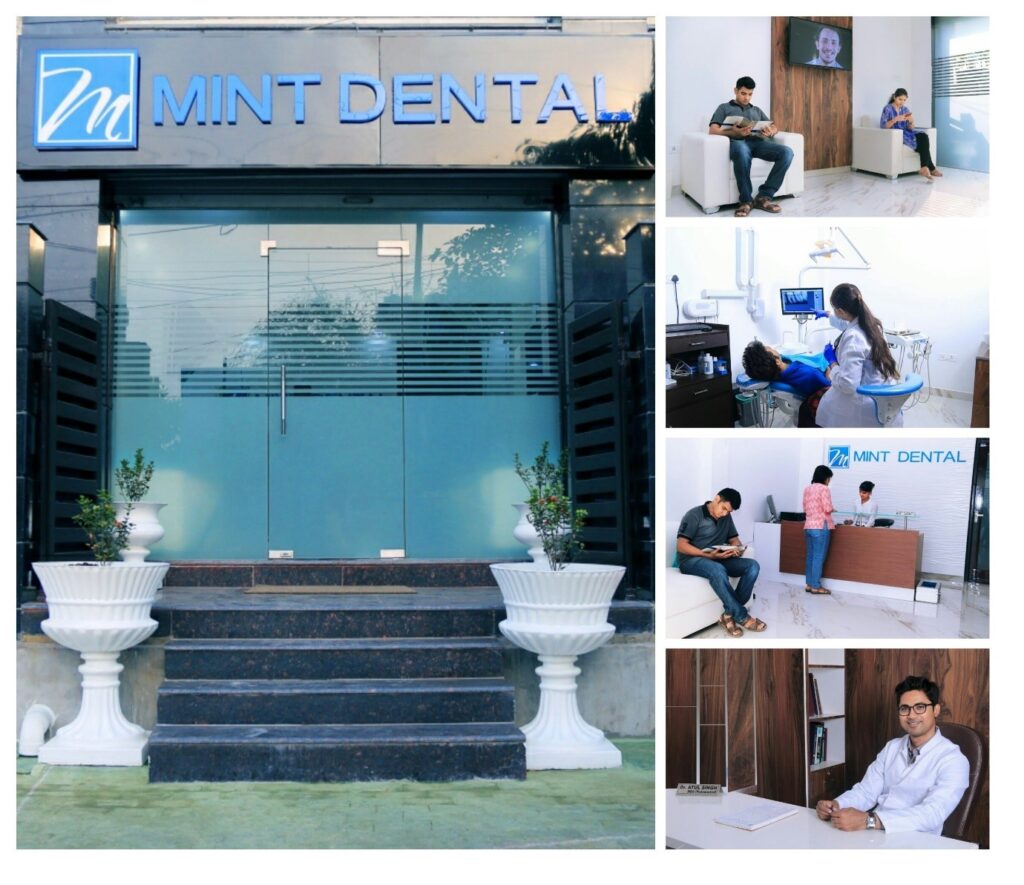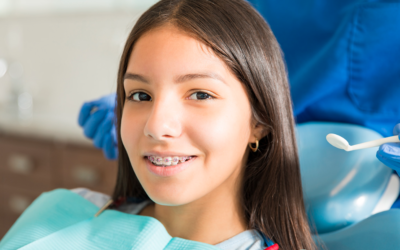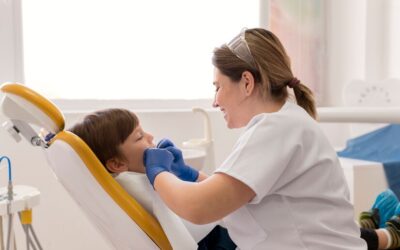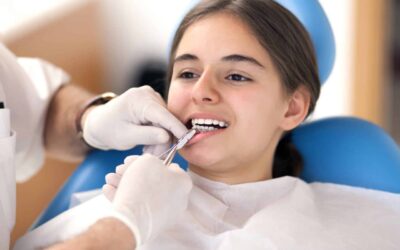Irregular, crowded, and protruding (buck) teeth have been issues for many people for hundreds of years. However, as dentistry progressed into the 21st century, approaches to correcting crooked teeth became clearer with advancements in technology. Orthodontic Treatment can be aesthetic, to improve a person’s smile, but it often aims to improve oral function, also.

An orthodontist can carry out work that aims to achieve the following:
- Closing wide gaps between the teeth
- Aligning the tips of the teeth
- Straightening crooked teeth
- Improving speech or chewing ability
- Boosting the long-term health of gums and teeth
- To prevent excessive wear and trauma of the teeth
- Treating an improper bite
These treatments can improve the condition of teeth and smile, and it can also lead to better chewing and speech to help protect teeth from damage or decay.
To achieve these results, the Orthodontist/Dentist can use a variety of dental devices or appliances, including headgear, aligners, plates, and braces. Orthodontic devices can be categorised as fixed or removable:
- Fixed appliances
These can be considered as the most reliable and the most commonly used device in orthodontics. They are used when simplicity and precision is important.
A person can eat normally with fixed appliances, but some foods and drinks need to be avoided, such as carbonated drinks, hard candy, gum, and other sticky foods.
People who play contact sports or sport where oral injury is a possibility then patients need to tell their dentist, as they may need special dental shields.
Examples of fixed orthodontic appliances include
a) Braces
These consist of brackets, wires, and bands. Bands are put around the teeth and serve as anchors for the appliance, while brackets are usually connected to the front surface of the teeth.

Wires in the arch shape pass through the brackets and are attached to the bands. As the archwire is tightened, force is applied to the teeth. Over time, this shifts them into proper position.
Follow-up involves monthly visits to adjust or tighten the braces. Treatment may last from few months to a couple of years.
Both clear and colored braces are available
b) Fixed-space maintainers
If a child loses a milk tooth prematurely, a space maintainer will stop the two adjacent teeth from moving into the space until the adult tooth comes through. A band is fixed to one of the teeth next to the space, and a wire from the band goes to the tooth next to the space.
c) Special fixed appliances
These can help in controlling thumb sucking and tongue thrusting habits. They may be uncomfortable, therefore they are only used if absolutely required.
2. Removable orthodontic appliances
Removable appliances can be used to treat minor problems, such as preventing thumb sucking or correcting slightly malaligned teeth.
These appliances can be taken out when cleaning, eating, or flossing. Sometimes, these appliances can also be removed them during certain activities, such as playing a wind instrument or playing sports.
Examples of removable appliances include:
a) Aligners: This alternative to braces may be useful for adults. They are virtually unnoticeable by other people, and they can be removed to brush the teeth, floss, or eat. An aligner is used for 2 to 3 weeks, then changed for a tighter one.

b) Headgear: A strap around the back of the head is attached to a metal wire in the front, or face bow. The goal is to hold back upper jaw growth, and keeping the back teeth in position while the front ones are pulled back.
c) Lip and cheek bumpers: These are specially made to relieve the pressure of cheeks or lips on the teeth.
d) Palatal expander: This appliance is designed to make the arch of the upper jaw wider. It consists of a plastic plate with screws that is placed on the palate, or roof of the mouth. The screws put pressure on the joints in the bones, forcing them outward. This expands the size of the area in the roof of the mouth.
e) Retainers: These are used after treatment to stop the teeth from moving back to their original positions. It can be modified to be used as an appliance to stop children from sucking their thumbs.
There are two types of removable retainer:
A Hawley retainer is made of metal and acrylic. The acrylic fits on the roof of the mouth and the wire surrounds the anterior teeth.
The other is made of clear plastic. It fits over and around the teeth and looks like an clear aligner.
Permanent retainers are bonded to the back of the teeth. It is usually recommended for lower front teeth because of the high risk of reverting to their former position.
Whatever your chosen device is, it is important to follow both the health professional’s instructions and oral hygiene instructions, to ensure the best possible outcome.
A severe malocclusion may affect eating, speech, and keeping the teeth clean.

Orthodontic treatment can be used treat the following conditions:
- Proclined front teeth: Treatment can improve the appearance and protects the teeth from damage during sports injuries or falls.
- Crowding: In a narrow jaw, there may not be enough space for all the teeth. The orthodontist or the dentist may remove one or more teeth to make room for the others.
- Impacted teeth: This can happen when an adult tooth does not emerge from the gum or bone or only emerges partially.
- Asymmetrical teeth: The upper and lower teeth do not match with each other, especially when the mouth is closed but the teeth are showing.

- Deep bite: When the mouth is closed, the upper ones come down too far over the lower ones.
- Open bite: When the mouth is closed, there is an opening between the upper and lower teeth.
- Crossbite: At least one of the upper teeth does not come down slightly in front of the lower teeth when the teeth are clenched. They are too near the cheek or the tongue.
- Spacing: There are gaps or spaces between the teeth, either because a tooth is missing, or the teeth do not fill-up the mouth. This is the opposite of crowding.
Starting treatment
Treatment usually starts around the age of around 12 or 13 years, when the adult teeth have been developed fully.
If problems do not emerge until later, the treatment may begin at a later date. In 2014, nearly 1.5 million adults received orthodontic treatment in the United States, according to the American Assocation of Orthodontists (AAO).
Children with a cleft lip and palate or any other genetic defect may require orthodontic treatment before their adult teeth have developed completely.
Good oral hygiene is essential before any orthodontic work can start. When orthodontic appliances are placed on the teeth, food particles are more likely to become stuck. The individual will need to brush much more carefully and more often to prevent tooth decay during treatment.
Without good oral hygiene practices, there is a risk of tooth decay during treatment. The dentist may also recommend avoiding cold drinks, sugary snacks, and other items that can lead to decayed teeth.
Diagnosis
The orthodontist will assess the state of the person’s teeth and predict how they are likely to develop without treatment.
The assessment will involve:
- Taking a full medical and dental health history
- Carrying out a clinical examination
- Taking x-rays of the teeth and jaw
- Making plaster models of the teeth
- Next, the orthodontist will decide on a treatment plan.
What’s best for you?
Generally, the default treat option for both adolescent and adult patients for correcting misaligned teeth is Fixed Orthodontic treatment. This is the most common and most reliable treatment modality for the majority of our patients. This option is available in Metal and Ceramic form where metal ones can be opted for if budget is a concern and ceramic braces can be opted for if aesthetic is the prime concern, as in adult patients.

Removable appliances for orthodontic problems are given generally to kids or for a minor problem and have a limited role to play in adult orthodontics. They are convenient and easy to use.
With time new treatment modalities have also been introduced in Orthodontics and Clear Aligner is one such modality. Clear aligners are transparent trays that are worn by the patients and they are practically invisible. They apply mild pressure to the teeth and get the desired result. They are especially suited to people who don’t want to wear braces for obvious reasons. This is becoming the modern treatment choice for most of our adult patients are our first choice if the price is not the main concern of the patients.
What’s the cost of Orthodontic treatments?
At Mint Dental regular fixed orthodontic treatment starts at Rs. 35,000 only. If one wishes to go for more aesthetic treatment options then Clear Aligners are a good choice. These starts at Rs. 80,000 only. There are other orthodontics devices that can be used but their cost can only be decided after clinical examination.
If you have any questions or would like to schedule an appointment with Dr. Atul Singh at Mint Dental call at +918795229292 or request an appointment by filling out the form on this page.



